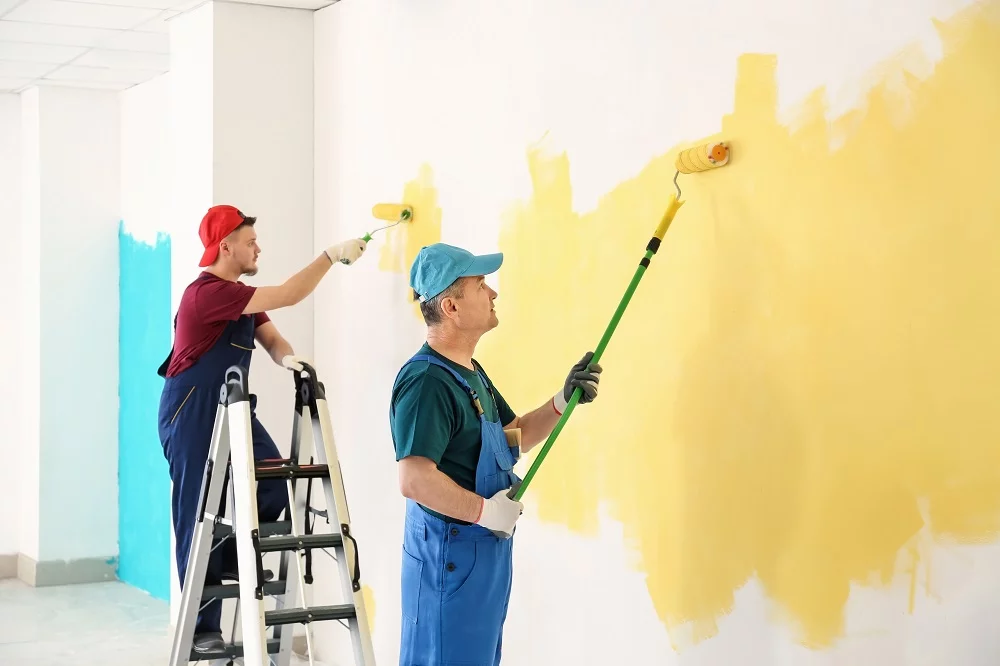Beginners in interior painters Adelaide should first focus on mastering the fundamentals, such as paint quality, composition, and brushwork.
Beginners should first select their chosen medium; acrylics and watercolors are popular options. Once this decision has been made, beginners should practice techniques learned from videos and books.\
Brushes
There is a wide variety of brushes that can be used in painting. But some stand out as being particularly well suited for certain tasks; these should be prioritized when selecting paint brushes. Look out for the best Painters Adelaide.
Round brushes are excellent tools for washes and lines of all sizes, made with either natural hog hair bristles or firm synthetic bristles residential painters Adelaide. Hog hair brushes tend to soften more when wet, making it easier to work with heavy body paints.
Flat brushes come in various forms, from short flats with square edge marks and bright brushes with long, stiff bristles, to short flats that have circular edge marks and flat brushes with round bristles that have two different lengths of bristles that overlap one another. Flat brushes are especially useful for thicker painting applications and creating texture effects when blended together to form blendable colors or blended thickly to achieve texture effects.
Paints
Paint is a liquid or semi-solid material used to provide protective or decorative coatings on surfaces, such as walls. The main ingredients of paint include pigments, binders and solvents (liquids). Additives may also be added for specific properties like mildew resistance.

Pigments are finely ground particles that provide color and concealment properties. When mixed with a binder, which works to hold them together into a film on surfaces being painted – such as oil or water as binding agents – pigments provide both color and concealment properties.
Painting is one of the oldest forms of visual expression, employing shapes, lines, colors, tones and textures in expressive patterns to evoke feelings of movement, volumetric space and light – often on flat surfaces.
Palettes
Palettes are flat surfaces used by artists to mix paints. While any material can be used, wood palettes have traditionally been the go-to choice. Some artists coat their palettes with linseed oil in order to keep their surfaces looking clean and smooth.
Students starting out can utilize disposable plastic palettes that make cleaning up after every painting session a snap – they are especially beneficial when working with acrylic, watercolor, or oil painting mediums.
Artists can create their own palettes by arranging the colors they plan to work with in an organized manner. This will enable them to gain an understanding of how hues blend, as well as providing a foundation for later monochromatic paintings.
Easels
Easels are indispensable tools that provide support for your work in an ergonomic and comfortable way, enabling you to paint without strain or anxiety. Available at most art supply stores or you can build one yourself, these invaluable aids offer support that allows for the creation of art.
When choosing an easel, you should carefully consider your painting style, painting size and medium used. Some artists find sitting while using an easel more comfortable than standing.
Convertible easels offer another great solution, enabling you to change the angle of canvas or paper from vertical to horizontal – perfect for watercolour artists as it makes creating smooth washes easier. However, they tend to be heavier and bulkier so may be best used in studio.
Canvas
Painting on canvas is a popular medium among professional artists, yet can be daunting for beginners. Therefore, it is best to experiment with this medium once becoming familiar with acrylics or watercolors.
Canvas is a durable plain-woven fabric composed of cotton or hemp yarn that’s used as an ideal painting material due to its durability, easy stretching properties and reduced propensity for cracking or warping than wood panels.
To create a smooth surface on your canvas, layer on primer (also known as gesso). The more gesso you apply, the smoother your canvas will become. Also experiment with stippling – making tiny dots of various colors on it to add an interesting texture!

